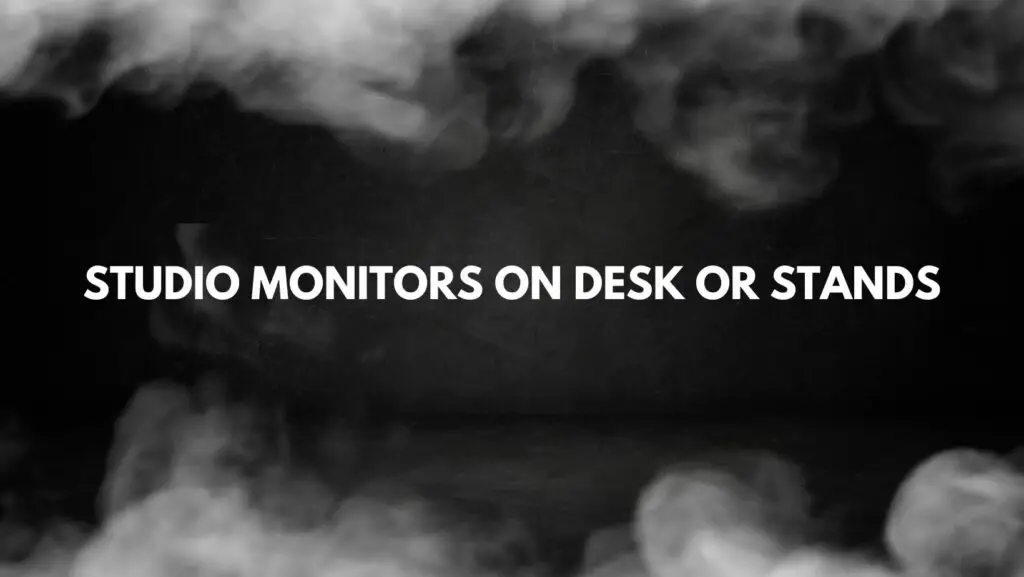The quest for optimal sound reproduction in a studio environment often leads to a crucial decision: should studio monitors be placed on the desk or elevated on stands? Each option presents unique advantages and considerations, shaping the listening experience for producers and audio enthusiasts alike. In this article, we’ll delve into the nuances of placing studio monitors on the desk versus using stands, exploring the implications for sound quality, ergonomics, and overall studio performance.
- On the Desk: Proximity and Convenience
Placing studio monitors directly on the desk is a common and convenient choice. This setup minimizes the need for additional furniture and simplifies the overall arrangement of the studio workspace. Proximity to the listener is immediate, allowing for easy adjustments and direct interaction with the monitors’ controls. However, this convenience comes with certain trade-offs that need careful consideration.
- Advantages of Desk Placement: Accessibility and Ease of Use
- Convenience: The immediate accessibility of studio monitors on the desk simplifies the process of adjusting volume, tweaking settings, and making real-time changes during the production or mixing process.
- Space-Saving: In smaller studio spaces, placing monitors on the desk helps conserve space, allowing for a more compact and efficient setup.
- Reduced Cable Lengths: With monitors on the desk, cable management becomes more straightforward, as shorter cables are often sufficient to connect the monitors to audio interfaces or other equipment.
- Challenges of Desk Placement: Acoustic Compromises
- Reflections and Resonance: Placing studio monitors on the desk can introduce reflections and resonances from the surface, potentially affecting the accuracy of the sound reproduction. Desk surfaces may color the sound and create unwanted artifacts.
- Listening Height:* Achieving the optimal ear level can be challenging on a desk. The height of the monitors might need to be compromised, impacting the precision of the stereo image and the accuracy of frequency response.
- On Stands: Elevating for Sonic Precision
Choosing to use dedicated speaker stands for studio monitors introduces a different dimension to the listening experience. While it requires additional setup considerations, the benefits in terms of sonic accuracy and reduced acoustic interference can be substantial.
- Advantages of Stand Placement: Sonic Accuracy and Isolation
- Optimal Height: Elevating studio monitors to ear level becomes achievable with stands, facilitating an accurate representation of the audio signal and enhancing the precision of the stereo image.
- Reduced Reflections: Stands minimize the potential for reflections and resonances from desk surfaces, contributing to a more transparent and uncolored sound reproduction.
- Isolation from Vibrations: Speaker stands provide isolation from vibrations and resonances, preventing them from being transmitted to the desk and potentially affecting sound quality.
- Challenges of Stand Placement: Space and Accessibility
- Space Requirements: Using stands requires dedicated space in the studio, which may not be ideal for smaller setups. Consideration of the overall layout and available room dimensions is essential.
- Adjustment Challenges: Unlike monitors on the desk, making real-time adjustments or interacting with controls on elevated monitors can be less convenient and may require additional accessories such as remote controls.
- Finding the Middle Ground: Isolation Pads and Desk Platforms
To address the challenges associated with both desk and stand placements, some users opt for a compromise. Isolation pads placed under studio monitors on the desk can reduce vibrations and minimize acoustic interference. Alternatively, dedicated desk platforms designed to isolate monitors from the surface can offer a middle-ground solution.
- Conclusion: Tailoring the Setup to Your Studio
In the debate between studio monitors on the desk versus stands, there is no one-size-fits-all answer. The optimal choice depends on the unique characteristics of your studio space, workflow preferences, and sonic priorities. Consider the trade-offs carefully, experiment with different setups, and tailor your choice to create a studio environment that enhances your creativity and delivers accurate, inspiring sound reproduction. Whether on the desk or elevated on stands, the right placement is the key to unlocking the full potential of your studio monitors.


